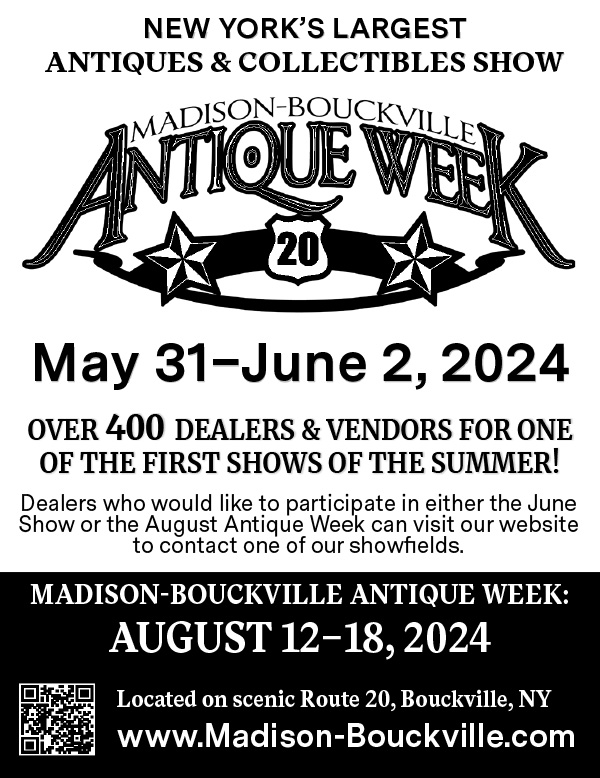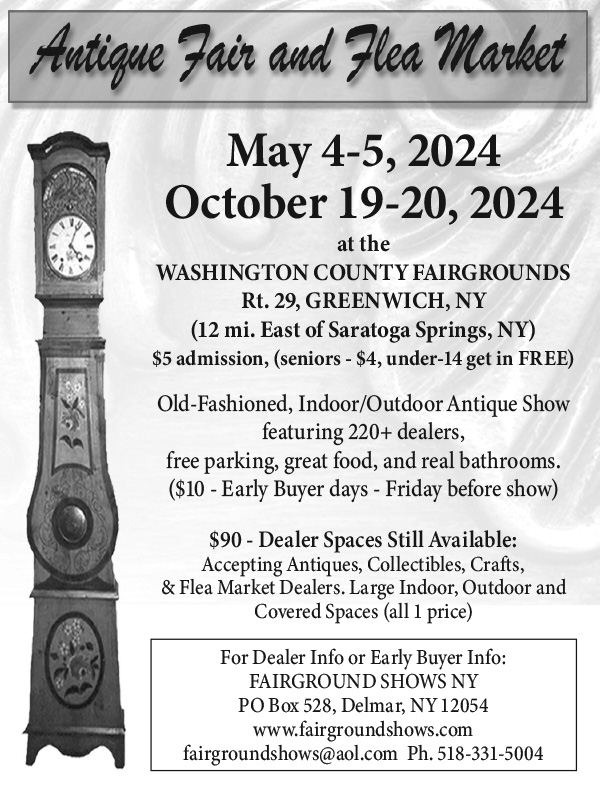Sometimes, when I look at a piece of antique furniture, I get a gut feeling it isn’t “right.” Occasionally, it’s obvious, while at other times it’s far more subtle. Recently, I saw a small one-door cupboard at an antiques show. It just didn’t look “honest” to me. As I got closer, I became more suspicious. The tag identified it as a “jam cupboard,” along with the price. It wasn’t what many of us would call a jam cupboard. Most of the time, such items have a drawer or two over one or two doors. They weren’t made by all woodworkers from the same set of plans. But, this one just didn’t fit the design and shape of the “usual” jam cupboard.
It was overly refinished pine with several knots in the wood. The height was just a bit under five feet. I’m short and could see the top surface, which also was over-finished. There was a base molding that had simple bracket feet cut into it with no signs of wear. This wood also was pine but darker than the rest of the wood in the cupboard. Although the darker base caught my attention, the thing that bothered me more was the top.
Usually when a cupboard or other case piece is low enough to easily see the top surface, it has been finished differently. The construction itself was all right for the piece. However, the fact that I could see the dovetails and general fabrication of the top of the cupboard was unusual. Generally, if a case piece is this low, the top has an extra piece of wood covering the joints, along with a simple molding on the front and sides of the top.
After feeling the feet weren’t original and the top looked wrong for a cupboard this low, my thoughts were that it had been a taller piece and cut down or had started out as the top of a two-piece cupboard. If this had been part of another piece or had a chest of drawers under it, the proportions would have been much better. The tag wasn’t “wrong,” just not too accurate. The true “story” was in the details!
Old friends called and asked me to come to look at a stand they just had purchased while on a trip to New England. It had some damage to its top that they wanted me to take care of. It was a nice cherry stand. The top had a bit of water damage that I felt I could remove. While I was there, they showed me a Shaker chair they had bought at a yard sale while on their vacation. The sale was being held by the children of an older couple who were “downsizing” and moving. My friends said the chair was the only nice thing at the sale. It was refinished and had a faded “Shaker” webbing seat that they felt was very old.
I was sorry I had to tell them is was not Shaker. The turnings were too fancy. The arm supports had extra decorative touches. as did the turned arms, that were too elaborate for a simple Shaker chair. Plus, it wasn’t any Shaker style I ever have seen. It had rockers that I felt were original. I told them the chair most likely was from the late 1700s and certainly had been crafted in New England.
Looking at the arm joints, I could see the chair had been painted several times. It was hard to tell, but I think the first paint either was black or a very dark green. It was easy to see that the last color had been white because there still was some in the pores of the oak rocker blades and a little in the joints. As for the seat, I told them it had been woven after the white paint had been removed. There was some evidence of the white under the webbing. The seat wasn’t that old. From the underside, we could see the weaver had used staples to hold the webbing ends together. It was a very nice four-slat rocker with arms. And I felt the chair truly was antique. It was from the area, but not Shaker-made. A Shaker chairmaker would not have spent that much extra time on his lathe, adding all those extra decorative turnings. My friends didn’t tell me what they paid for it, except to say it was “too much.”
At an auction preview, I noticed a “mule” chest or chest over drawers that didn’t look quite “right.” It was made of pine and had been refinished, although there was some evidence it once had been dark red. That color was found on the front edges of the drawers, over the dovetails and a little along the edges of the backboards. The unusual part was the bun feet it had. Although such feet can be found on some of these early chests, this case wasn’t “fancy” enough for such feet.
With some help, I laid it on its back. Along the bottom edges of the sides, front, and back corners, I could see saw cuts where there once had been extensions to form simple feet. These had been cut off and the bun feet added. Old molding from another case had been applied as a bottom molding, and the new cuts had been stained to look old. Also, the original hardware had been replaced with new Chippendale-style reproductions. Although the chest looked nice, its base and hardware were new. Plus, for my taste, it had been over finished and was too shiny for a pleasant country piece.
Even if the feet hadn’t gotten my attention, I would have wanted to look at the underside anyway. The inside, back and bottom of any piece, especially a case item, can tell you a lot more than the exterior. These areas are where the “giveaway” details are.
At another preview, I saw a nice-looking painted Pennsylvania “Dutch” cupboard. It had two upper doors with nine “lights” or glass panes in each. The two bottom doors had raised panels. The paint was an interesting yellow and red graining. It was very colorful. But, after looking at for a few minutes, I decided it was a marriage.
Both cases were mostly poplar wood. But, the bottom section had pine as its secondary wood, while the top had poplar. And, when I looked at the rear, I noticed the nails holding the top boards in place were different from those holding the bottom ones. Because of the paint, it wasn’t possible for me to see if either case had been altered. The top section was a bit narrower than the lower one, since there was a little gap under the molding used to hide the joint where the two pieces met. The cupboard was pretty but not “right.”
While visiting a co-op, I noticed a mahogany box. It was about 18 inches long and 12 inches high. Its lid had a bald eagle, inlaid using four different woods, that was well done. The inside of the box was clean. The tag said, “Personal box made in Pennsylvania in the 1800s with eagle inlay,” plus a rather high price. From the bottom, I could see that the wood was English Deal, a type of conifer. Also, it had simple brads holding it together. I placed it back on the table and looked at the inlay again. Then, I saw what had been bothering me. The box was old enough that the two-board top had shrunk, and someone had carefully inserted a filler strip to fill the small gap that had opened.
What bothered me was that the inlay was not only in the original top surface, but also in the filler strip. If the inlay had been original, it either would have split or moved when the two top boards started to move apart. Therefore, this inlay had been set in after the filler was put in place. I felt the box was English and had developed some damage. Someone repaired the top and decided an American eagle would make it more saleable and for more money.
The fact that the inlay was set in the filler was the detail that I nearly missed. Also, the Deal bottom and bald eagle just didn’t belong together. I’m sure the box was not made in Pennsylvania. However, it might have been altered there! Be careful and look at everything. Most items have a “story.” We just need to be certain it’s a good, honest one.
Next month, we’ll look at more fakes I’ve known.
Article by Lew Larason




